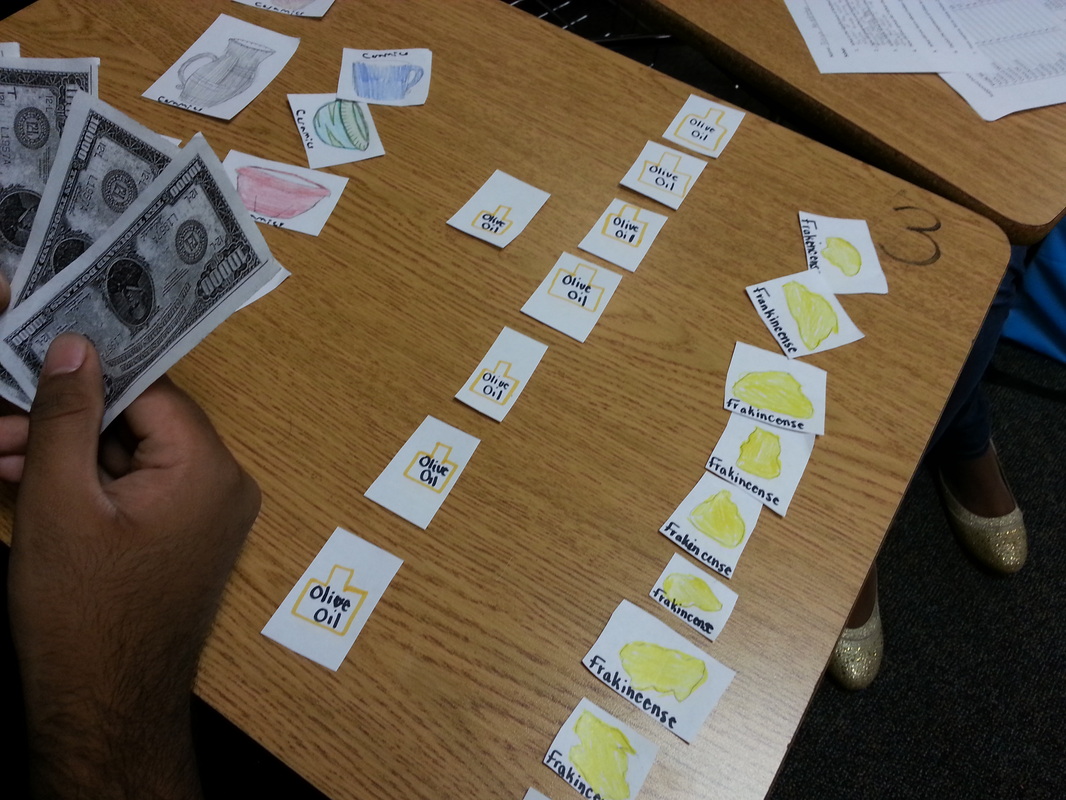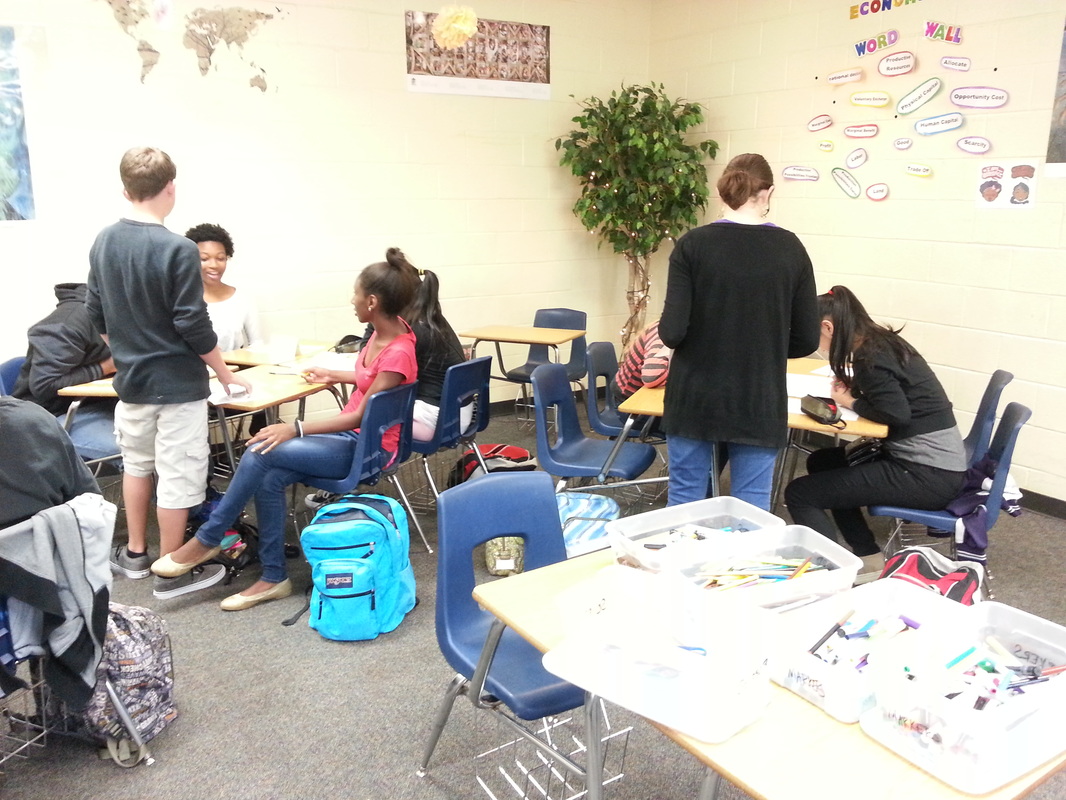| The AP World History curriculum places a great deal of importance on the causes and effects of trade throughout history. What better way to learn about key historical trade routes than participating in a trade simulation? This allows students the opportunity to experience these concepts in a hands-on environment which in turn makes historical information fun and memorable. Recently, my AP World History classes participated in an Indian Ocean trade route simulation where they learned about important trade cities and commodities during the Classical Period of history. Students were placed in groups as either major Indian Ocean trading cities (Kilwa, Sohar, Calicut, Guangzhou, and Malacca) or as traders/merchants. Students sold, bartered, and traded items such as silk, nutmeg, tea, and porcelain. During the simulation the room became a hive of activity and engagement. I love watching my students enjoy the learning process! Overall, my students loved this simulation. I had several requests to play again in the future! Simulations can be time consuming to set up, but the efforts are always worthwhile. |
|
0 Comments
Your comment will be posted after it is approved.
Leave a Reply. |
AuthorHello! I'm a high school social studies living in the South. I teach AP World History and Economics. Here are some of my thoughts on education! Archives
November 2014
Categories |


 RSS Feed
RSS Feed